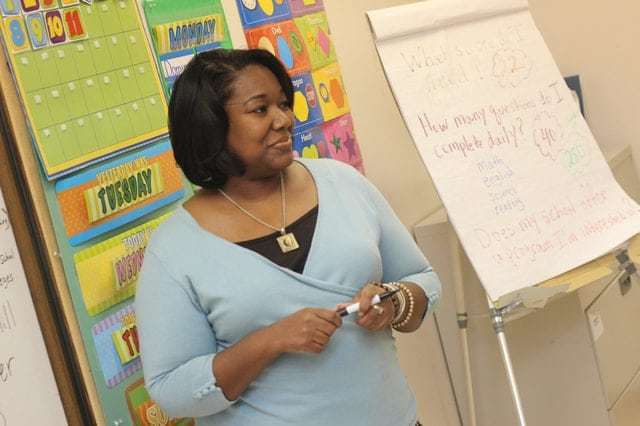
Increasing Internal Student Engagement
Increasing Internal Student Engagement
Many teachers are seeking ways to increase student engagement in the classroom. The purpose of this blog is to help teachers do just that. I am going to address an area of student engagement that most teachers overlook. That area is internal student engagement. Teachers must consider what it is they want a student to be doing internally while they are presenting material. When I ask teachers what they want the students to do while they are speaking, their answer most often is they want them to pay attention. Well, what does this mean? I want to help you clearly identify what that means for both you as a teacher and for your students. I believe all engagement should start with teachers and students knowing the desired outcome of student engagement.
 The following are examples of what a teacher may want students to do as they are speaking or presenting material. First, do you want students to imagine a scenario in their mind as a result of something you say? Would you like for them to bring up images about a certain phenomenon? Is your intent to make them become curious or begin to wonder about a certain thing? Would you like for them to become angry, empathetic or feel indifferent about what you are saying? There are times you may want them to compare their situation to another with which they are unfamiliar. Knowing exactly what your goal is during your presentation is absolutely critical to being able to elicit a particular response. Identifying what you want them to do internally sets the stage for learning.
The following are examples of what a teacher may want students to do as they are speaking or presenting material. First, do you want students to imagine a scenario in their mind as a result of something you say? Would you like for them to bring up images about a certain phenomenon? Is your intent to make them become curious or begin to wonder about a certain thing? Would you like for them to become angry, empathetic or feel indifferent about what you are saying? There are times you may want them to compare their situation to another with which they are unfamiliar. Knowing exactly what your goal is during your presentation is absolutely critical to being able to elicit a particular response. Identifying what you want them to do internally sets the stage for learning.
Once you have identified what you want students to do it is time to determine what questions or statements will elicit those internal responses you desire. For example, if you want students to imagine a scenario then use questions that cause this to happen. For instance, you could say, “What do you think will happen when…,” and, “Suppose you are in a situation where…” I am suggesting that instead of simply giving answers to students, work on prompts that engage their minds immediately. Consider using prompts such as, “What do you think will happen if…” “You know how most people think…” and “Do you ever wonder why it is that….” I believe it is incumbent upon every teacher to begin a discussion with a phrase, question or statement that opens the minds of the students. Students will be less likely to get off task if you begin by focusing their minds on a topic immediately.
Another way to engage students is by creating a little cognitive dissonance into their lives. By this I mean, the teacher takes something that students think they know and show them how it is not true. I used this technique when I was an earth science teacher and I talked about hurricanes. When I introduced my unit, I would tell the students that as we learned about hurricanes, they would find that although the term hurricane means “big wind,” it is not the wind that kills most people during a hurricane. I would play up the fact that the windspeed of a hurricane’s core can be 75 mph but that some modern hurricanes have topped out above 200 mph. I would ask them to think about video of hurricanes they have seen on television and how the palm trees are swaying so violently in the wind. This would pique their curiosity even more. As I vehemently claimed that the wind was not the major cause of the loss of human life during hurricanes, I would not tell them the major cause, but rather let them figure out the answer as I moved through the unit. Creating that tension kept them on task and on target.
Other examples of how to keep their minds engaged is to use statements like, “Based on what I am about to share, in just a few minutes I’m going to ask you to…” Here is one of my favorite statements that commanded their immediate attention. “Here are some things that most people believe are true about today’s topic. Which ones are true and which ones are false? There is extra credit for the teams that get this right.” Additionally, I ask you to try these next two lines. They really get the students thinking. “There is a common belief that….. So why do you think that the truth is that…..?” Please understand that these statements can be used anytime during class. They do not have to be used just when introducing something new. Whatever the next thing is that you are about to talk about, figure out how to put it in a question so that they have to immediately start thinking about a possible answer. I have found that students get bored when simply given fact after fact after fact to memorize.
There are two things about what I have shared thus far. First and foremost, I recognize that it involves a little more preparation. Especially at first. However, it will become much easier as a little time passes. It is definitely worth the extra prep because students will not only participate internally, but will start to shout out answers and make the class livelier. I also recognize this is similar to using the Socratic method. However, the difference is that instead of asking questions and getting an immediate response, these questions or statements are made with the explicit purpose of creating internal dialogue by those who are receiving the information.
It is not enough to tell students to pay attention. Teachers must pull students into the lesson and make their ideas part of the lesson. By using the strategies listed above, students will know the specific things they need to do internally because the teacher is prompting them to do so. By incorporating their ideas and thoughts the lesson becomes more interactive and thus more engaging.


 On November 13, 2019, I presented on Reaching the Promise of At-Promise Students at the RAPSA Conference in San Diego. What made this
On November 13, 2019, I presented on Reaching the Promise of At-Promise Students at the RAPSA Conference in San Diego. What made this 






